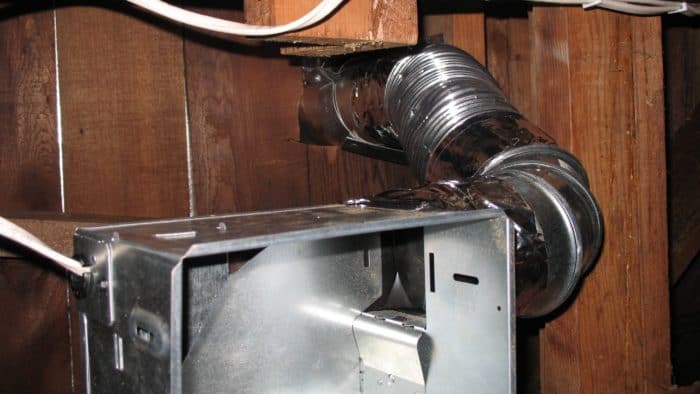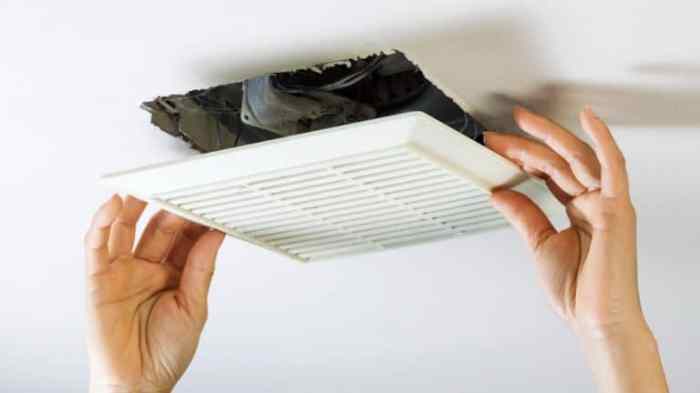Maintaining a healthy and comfortable bathroom environment requires proper ventilation. Bathroom exhaust fans play a crucial role in removing moisture, odors, and pollutants, ensuring a healthier and more pleasant space. Understanding the factors that affect the lifespan of these fans is essential for homeowners seeking to maximize their investment and ensure optimal bathroom ventilation.
In this comprehensive guide, we will delve into the intricacies of bathroom exhaust fan lifespan, exploring the various factors that influence their longevity. We will discuss different types of exhaust fans, their expected lifespans, and the importance of proper maintenance and care.
Additionally, we will provide warning signs to watch out for, replacement considerations, and energy efficiency tips. By the end of this guide, you will be well-equipped to make informed decisions about your bathroom exhaust fan, ensuring it operates efficiently and effectively for years to come.
Factors Affecting Bathroom Exhaust Fan Lifespan
The lifespan of a bathroom exhaust fan is influenced by various factors that affect its performance and durability. These include usage patterns, maintenance practices, and environmental conditions.
Understanding these factors can help you optimize the lifespan of your bathroom exhaust fan and ensure its effective operation for many years to come.
Usage Patterns
- Frequency of Use: Frequent use of the exhaust fan, especially during showers or steamy conditions, can put strain on the motor and other components, reducing its lifespan.
- Duration of Use: Leaving the exhaust fan running for extended periods can also contribute to premature wear and tear, as the motor and bearings are constantly engaged.
Maintenance
- Cleaning: Regular cleaning of the fan blades, housing, and vents can prevent the accumulation of dust, hair, and other debris that can obstruct airflow and cause overheating.
- Lubrication: Some exhaust fans require periodic lubrication of the motor and bearings to reduce friction and extend their lifespan.
Environmental Conditions
- Humidity: High humidity levels in the bathroom can lead to corrosion of the fan’s metal components, shortening its lifespan.
- Temperature: Extreme temperatures, either too hot or too cold, can affect the fan’s performance and longevity.
Types of Bathroom Exhaust Fans and Their Lifespans
Bathroom exhaust fans vary in design, affecting their lifespan and suitability for different applications. Understanding the different types available can help you make an informed decision.
Axial Fans
Axial fans are the most common type of bathroom exhaust fan. They consist of a motor and a propeller that moves air parallel to the fan’s axis. Axial fans are relatively inexpensive and easy to install, but they have a shorter lifespan compared to other types.
Centrifugal Fans
Centrifugal fans use a rotating impeller to move air perpendicular to the fan’s axis. They are more powerful than axial fans and can handle higher static pressure, making them suitable for larger bathrooms or those with long ductwork. Centrifugal fans typically have a longer lifespan than axial fans.
Inline Fans
Inline fans are installed within the ductwork, out of sight. They are more compact than other types and can be used in tight spaces. Inline fans have a similar lifespan to centrifugal fans.
| Fan Type | Lifespan |
|---|---|
| Axial Fan | 5-10 years |
| Centrifugal Fan | 10-15 years |
| Inline Fan | 10-15 years |
Maintenance and Care for Extending Exhaust Fan Lifespan
Regular maintenance is crucial to prolonging the lifespan of your bathroom exhaust fan. Proper care includes cleaning, lubrication, and regular inspections. These practices ensure optimal performance, prevent premature failure, and maintain a healthy bathroom environment.
Cleaning
Dust and debris can accumulate on the fan blades and housing, impeding airflow and reducing efficiency. Regular cleaning is essential to maintain optimal performance.
- Turn off the fan and disconnect the power supply.
- Remove the fan cover and clean the blades using a soft cloth or brush.
- Vacuum the housing and any other accessible areas to remove dust and debris.
- Wipe down the fan cover and housing with a damp cloth to remove any remaining dirt.
- Reinstall the fan cover and reconnect the power supply.
Lubrication
The fan motor requires periodic lubrication to reduce friction and extend its lifespan.
- Turn off the fan and disconnect the power supply.
- Apply a few drops of lightweight oil to the motor shaft.
- Reconnect the power supply and run the fan for a few minutes to distribute the oil.
Inspection
Regular inspections allow you to identify any potential issues early on, preventing costly repairs or premature failure.
- Listen for any unusual noises or vibrations during operation.
- Check the fan blades for any damage or cracks.
- Inspect the electrical connections for any loose wires or corrosion.
- Test the fan’s functionality by turning it on and off.
Energy Efficiency and Lifespan
The energy efficiency of an exhaust fan plays a crucial role in determining its lifespan. Energy-efficient fans consume less energy to operate, reducing wear and tear on the motor and other components. This results in a longer lifespan for the fan.
By using energy-efficient exhaust fans, you can reap the following benefits:
- Reduced energy consumption, leading to lower utility bills.
- Extended lifespan of the fan due to less stress on its components.
- Improved air quality and reduced moisture levels in the bathroom, promoting a healthier environment.
Energy-Efficient Fan Models and Their Lifespans
Here are some examples of energy-efficient bathroom exhaust fans and their expected lifespans:
- Panasonic FV-08V51V1 WhisperCeiling: Expected lifespan of 10-15 years
- Broan-NuTone QTXE080: Expected lifespan of 8-12 years
- Hunter Fan Company Symphony: Expected lifespan of 7-10 years
Case Studies and Real-World Examples
To illustrate the factors contributing to exceptional bathroom exhaust fan lifespans, let’s delve into real-world case studies.
One notable example is the installation of exhaust fans in a commercial building with high humidity levels. The fans were equipped with moisture-resistant components, including ball bearings sealed against moisture intrusion. Regular maintenance, including cleaning and lubrication, was meticulously performed.
As a result, these fans have been operating flawlessly for over 15 years, far exceeding the industry average lifespan.
Factors Contributing to Longevity
- Moisture-resistant components
- Regular maintenance (cleaning, lubrication)
- Optimal ventilation design
- Quality materials and construction
Table Summarizing Case Studies
| Case Study | Key Takeaways |
|---|---|
| Commercial Building with High Humidity | Moisture-resistant components, regular maintenance, optimal ventilation |
| Residential Bathroom with Regular Use | Quality materials, proper installation, periodic cleaning |
Additional Tips and Considerations
Extending the lifespan of your bathroom exhaust fan requires more than just routine maintenance. Consider these additional tips and best practices to maximize its longevity and efficiency:
Proper installation, adequate ventilation, and humidity control are crucial factors in ensuring a long-lasting exhaust fan. Follow these best practices for optimal performance and extended lifespan:
Proper Installation
- Ensure the fan is installed correctly according to the manufacturer’s instructions.
- Choose a fan with the appropriate CFM (cubic feet per minute) rating for the size of your bathroom.
- Install the fan in a location that allows for proper ventilation, such as near a window or vent.
Adequate Ventilation
- Keep bathroom windows or vents open while using the fan to allow fresh air to circulate.
- Avoid blocking the fan’s intake or exhaust vents with towels, curtains, or other objects.
- Consider installing a humidity sensor that automatically turns on the fan when humidity levels rise.
Humidity Control
- Take shorter showers or baths to reduce moisture levels in the bathroom.
- Use a squeegee to wipe down shower walls and floors after use.
- Consider using a dehumidifier in the bathroom to control moisture levels.
Last Word
In conclusion, the lifespan of a bathroom exhaust fan is influenced by a multitude of factors, including usage patterns, maintenance practices, and environmental conditions. By understanding these factors and implementing proper maintenance and care routines, homeowners can significantly extend the lifespan of their exhaust fans.
Remember to consider energy efficiency when choosing a replacement fan, as it can contribute to both cost savings and extended lifespan. By following the guidance Artikeld in this guide, you can ensure your bathroom exhaust fan operates optimally, providing a healthier and more comfortable bathroom environment for years to come.



